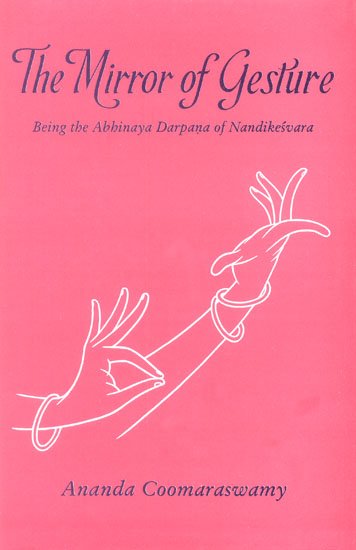Abhinaya-darpana (English)
by Ananda Coomaraswamy | 1917 | 16,981 words | ISBN-13: 9788121500210
The English translation of the Abhinaya-darpana (“the mirror of gesture”) by Nandikeshvara: an encyclopedic manual of the art of gesticulation. It belongs to a wide range of literature known as Natya-shastra: the ancient Indian art of dramatic performance, theatrics, dance and music. The Abhinaya Darpana is an abridgement of the Bharatarnava, a m...
The Indian Editor’s Preface
The Bharata Śāstra, which is most dear to the Lord of Śrī, the Creator of every world, and which is the delight of every connoisseur in every world, has been brought into being by Siva, Śambhu, Gaurī, Brahmā, Mādhava, Nandikeśvara, Dattila, Kohala, Yājñavalkya, Nārada, Hanuman, Vighrarāja, Subrahmaṇiya, Arjuna, and the daughter of Bāṇa (i. e. Uṣā): these are the famous authors of our science. Notwithstanding this, it is known to everyone that in these days our people not merely neglect this lore as though it were of the common sort, but go so far as to declare it to be an art that is only suited for the entertainment of the vulgar, unworthy of cultivated men, and fit to be practised only by play-actors. But it is like the Union-science (Yoga-śāstra) which is the means of attaining spiritual freedom (mokṣa): and the reason why a science such as this has come to be regarded in such a fashion is that it is by movements of the body (aṅgikābhinaya) that the lineaments and interplay of hero and heroine, etc., are clearly exhibited, so as to direct men in the way of righteousness, and to reveal an esoteric meaning; obtaining the appreciation of connoisseurs and those who are learned in the lore of gesture. But if we understand this science with finer insight, it will be evident that it has come into being to set forth the sport and pastime of Srī Krishna, who is the progenitor of every world, and the patron deity of the flavour of love; that by clearly expressing the flavour, and enabling men to taste thereof, it gives them the wisdom of Brahma, whereby they may understand how every business is unstable; from which understanding arises indifference (vairāgya) to such business, and therefrom arise the highest virtues of peace and patience, and thence again may be won the Bliss of Brahma.
It has been declared by Brahmā and others that the mutual relations of hero and heroine, in their esoteric meaning, partake of the nature of the relations of master and pupil, mutual service and mutual understanding; and therefore this Bharata Śāstra, which is a means to the achievement of the Four Aims of Human Life,—Virtue, Wealth, Pleasure, and Spiritual Freedom,—and the most exalted science, practised even by the Devas, should also be patronized and practised by ourselves.
So thinking, I resolved to restore the science to its former eminence, which has been day by day obscured. First of all was published the “Mirror of Gesture”, composed by one of the founders of the science, Nandikeśvara, to wit; but as it was not readily understandable by ah, there have been introduced into this second edition pictures of the “Hands”, with descriptions, and also particulars of the occasion of their origin, race, patron deities, etc., mentioned in various works; and also combined hands, hands to indicate famous emperors, sacred rivers, trees; animals, such as the lion; birds, such as the swan; water-creatures, such as the crocodile; and a classification of “Heads.” In this way a total of four hundred and eight new verses have been introduced, and therewith a simple translation with easy Telugu words such as women and children can understand.
Besides this we have published another book, the Bharata Rasa Prakaraṇa, in which the Nine Flavours are explained, with Telugu translations; and there exists a reference work of the nature of a commentary, written by Rāja Mannāru Gudi Sabhāpataya Gāru, containing full explanations of such technical terms as rāga, tāla, nāyaka, nāyakā, rasa, etc. May those of the public who are connoisseurs both patronize and give us their encouragement.
Maḍābhūṣi Tiruveṅkaṭa, of Niḍāmaṅgalam,
A.D. 1887.
